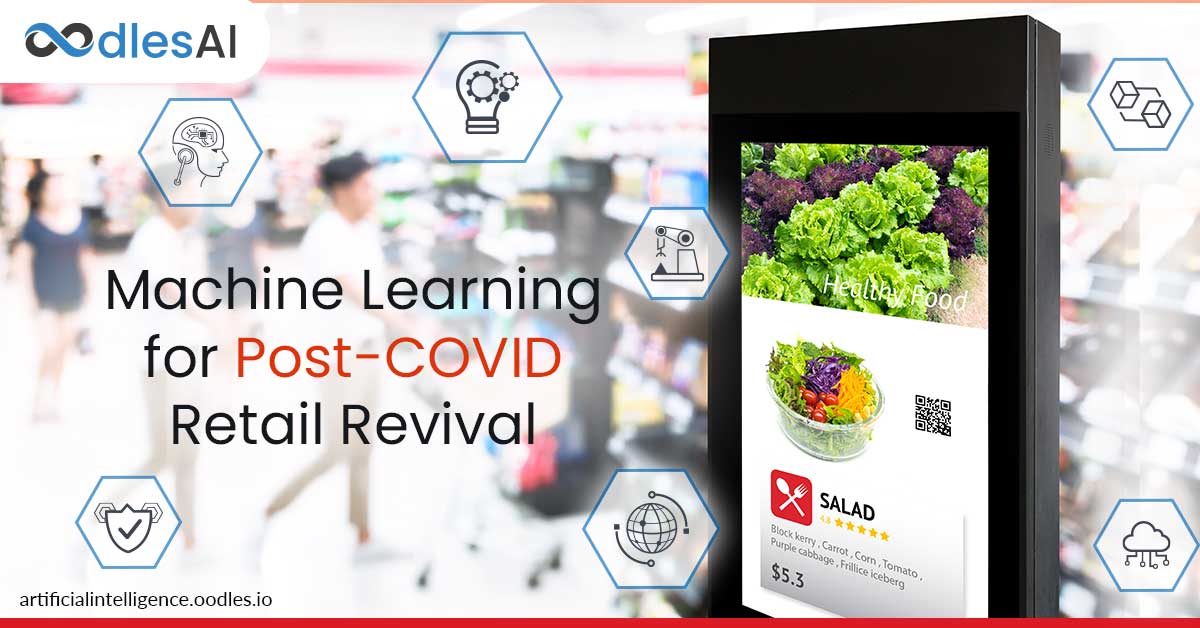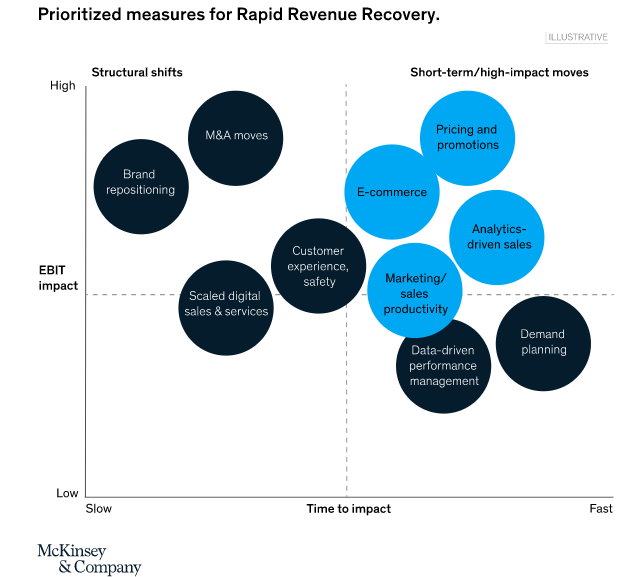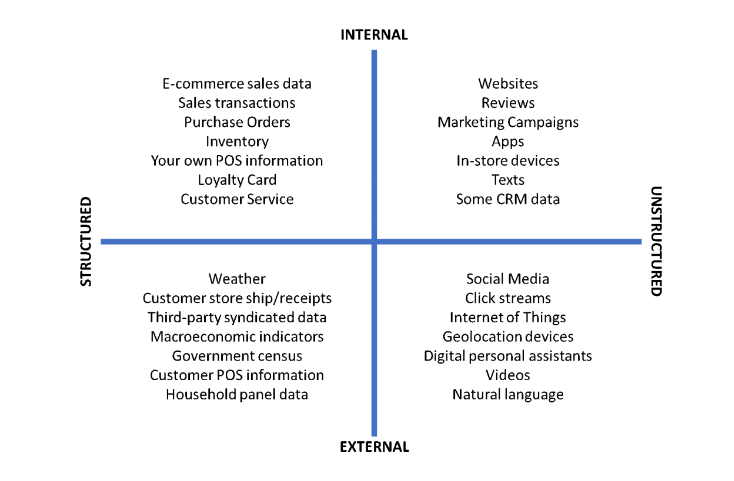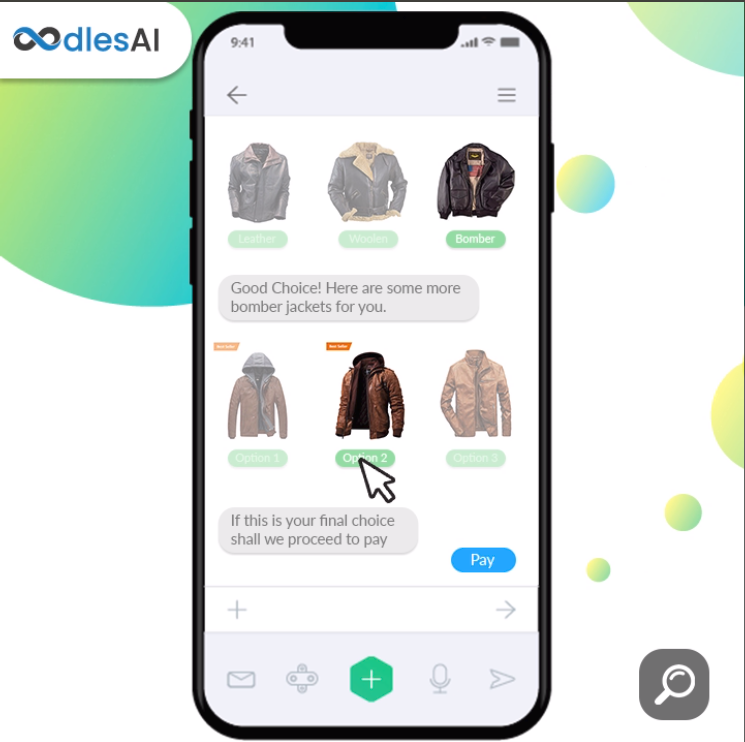How Machine Learning in Retail is Driving Sales Post COVID
Sanam Malhotra | 1st July 2020

For retailers, running operations post-COVID lockdown can never be “business as usual” again. From retaining dispersed customers to adopting contactless services, retailers are bearing the strongest brunt of the COVID-led crisis. Artificial intelligence is emerging as a panacea for retailers grappling with tectonic shifts in consumer demands and safe supply. Data-driven machine learning development offers granular insights around consumer demands, preferences, interactions, product life cycles, and other critical areas to combat the crisis. We, at Oodles AI, explore some key applications of machine learning in retail that promise short-term impact on retail sales and customer satisfaction.
Post-COVID Retail Roadmap With AI-led Automation
With lockdown norms gradually easing up in most countries, retailers, especially in the non-essential sector are reshaping strategies to stay in the game. While returning to markets under infection anxiety, retailers are struggling to enforce in-store precautionary measures such as social distancing and contactless purchasing.
As per the latest Forrester report, global retail sales stare at a sharp 9.6% decline, amounting to over $2.1 trillion losses in 2020.
In the wake of shifting consumer behaviors, retailers can only survive the long-lasting impact of COVID with the following technology-driven initiatives using dynamic artificial intelligence services, such as-
a) Shifting to online platforms and promoting digital purchases
b) Adapting to touchless automation, both in stores and in warehouses
c) Offering value for consumer money with automated price optimization, and
d) Improving customer loyalty with data-driven marketing efforts

Global consultancy, McKinsey maps the road to retail recovery post-COVID, highlighting data-driven insights and solutions as the most impactful short-term strategies.
Machine Learning in Retail: Adaptive Applications to Survive the Crisis
1) Predictive Analytics to Match Demand Fluctuations
With dwindling consumer demands amid lockdown, it is highly essential for retailers to conduct an in-depth analysis of customers’ buying decisions. Moreover, analyzing internal and external factors such as new product launches, price changes, local weather conditions, new sales channels, etc. profoundly affect retail profitability.
Machine learning in retail can streamline demand forecasting by analyzing patterns in big data collected from consumer interactions with online and offline sales channels. ML can sift through both structured and unstructured data including sales reports, warehouse data, marketing polls, and social media signals to forecast demand with accuracy.

IBF maps different data sources used by machine learning algorithms to facilitate demand forecasting.
We, at Oodles, channelize the above-mentioned data sources to train our ML models that optimize retail demand forecast and deploy accurate predictive models for-
a) Consumer sentiment analysis across social media platforms to gauge customer’s outlook about certain products
b) Product life cycle assessment to forecast demand of existing and new product launches
c) Weather forecasting for managing seasonal demand surges and drops effectively.
Not only can data-driven algorithms forecast demand, trends, and seasonality but also make predictions based on demand patterns.
Also read- AI-powered Digital Marketing Tools For Post-COVID Business Revival
2) Contactless Purchase With Virtual Assistants
While large-scale retailer houses are still resilient to the crisis, small-scale retailers with limited brand presence are losing out to eCommerce giants. Even with eCommerce listings, chances are that local retailers are too far in the list to capture potential customers.
In a bid to encourage contactless retail purchases, AI offers conversational solutions like chatbots and virtual assistants to place pre-orders at the customer’s convenience.
Local grocery stores can build and promote their personal chatbot applications to facilitate consumers with remote order placement and scheduling deliveries. Machine learning and NLP (Natural Language Processing) algorithms together enable retailers to add the following features in the chatbot-
a) Easy order placement for multiple items through chat and voice assistance
b) Updates and notifications about stock availability
c) Personalized offers and discounts to improve customer loyalty
d) Data-driven product recommendations based on customers’ buying history, and
e) Multiple payment options

At Oodles, we build and deploy interactive and intelligent shopping assistants for retail and eCommerce platforms across websites, mobile apps, and social media channels.
Also read- Brand Development Strategies with Conversational Commerce Applications
3) In-store Video Analytics for Optimal Product Placements
In-store product placement can have a profound impact on the sales curve of any retail store. However, with tectonic shifts in consumer demand, it is hard to crack the ideal product placement that enables retailers to sell products like hotcakes.
Powered by deep neural networks, AI and machine learning in retail are beginning to disrupt retail product placement challenges with applications, such as-
a) Consumer buying behavior analysis using video-driven heatmaps to extract most preferred product categories on the shelves
b) Product Image recognition and analysis to understand profitability and demands
c) SKU assortment optimization to reduce manual efforts and cost in making critical stock decisions.
Also read- Bracing Shopping Centers with Facial Recognition for Post-COVID World
Deploying Machine Learning in Retail With Oodles AI
In the light of unprecedented lockdown, we, at Oodles are making constant efforts to empower small and large retailers with data-driven solutions. Our seasoned AI team enable retail and eCommerce businesses to optimize their targeting and marketing efforts with these data-driven solutions-
a) Conversational shopping assistants with direct purchase functionality
b) Predictive analytics for accurate demand forecasting
c) Personalized product recommendations and offers
d) Product placement optimization with deep video analytics, and more.
Join forces with our AI development team to explore our expansive artificial intelligence services and capabilities.



